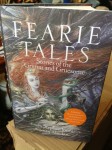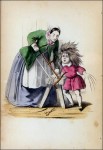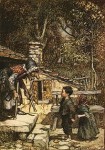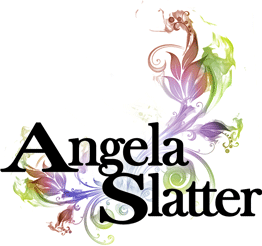 Please welcome the delightful Mr Brian Hodge, who fills us in on cages, cannibalism, Der Struwwelpeter, and fairy tales for today’s Fearie Tales post.
Please welcome the delightful Mr Brian Hodge, who fills us in on cages, cannibalism, Der Struwwelpeter, and fairy tales for today’s Fearie Tales post.
CONCERNING THE BROWNSTONE building where they were housed, it was said that the sun had never once shined on the place in all the days and decades it had stood, and whenever the rain pelted it, it was always Arctic cold. And this was fitting, for it had been a terribly long time since the sun had shined on their lives, if ever the sun had blessed their unhappy countenances at all.
1. What is the fairy tale you remember most from your childhood ? the one that made the biggest impression on you?
It’s not even close — “Hansel and Gretel.” Its elements are so visceral, and you don’t have to be very old at all for them to fill you with dread: being repeatedly taken out and abandoned by your parents, being lost in the wilderness, being lured in by a predatory stranger, imprisonment, slavery, cannibalism. Just contemplating that as a kid feels like staring at the end of the world.
2. Is there a natural link, do you think, between fairy tales and horror? 
Cages and cannibalism make for some pretty strong connective tissue. Sure … both story types go to dark places, and can traffic in beings and events that don’t occur in our everyday consensus reality. Both can be quite stark in depicting the depths of purely human depravity. Even the ones we normally think of as veering toward the softer, happily-ever-after side of things can still get vicious. Like “Cinderella.” In the pre-Disneyfied versions, the stepsisters are slicing off parts of their own feet to fit in the slipper. That’s really twisted. The desperation and greed that suggests…
3. Does your work usually play with fairy tale elements or is this a first for you?
It’s almost a first. I did write a story once for an anthology riffing on Shakespeare’s A Midsummer Night’s Dream, and set it in the fairy realm. I just had riotous fun with it, doing a quick four-act sequel called “An Autumnal Equinox Folly,” in which Nick Bottom gets his donkey head back and goes forth to reclaim Titania’s love, and Puck’s concluding monologue reveals him to be Johnny Rotten.
Which isn’t to imply that I didn’t have fun with my Fearie Tales story, but it was still a more serious undertaking than cracking Elizabethan bestiality jokes.
 4. What do you think the fairy tale form offers to writers and readers?
4. What do you think the fairy tale form offers to writers and readers?
It offers a shortcut to the impossible. The suspension of disbelief is even more willing. We can be quicker about setting aside skepticism and getting to the heart of things.
I think it was Henry James who said that a good ghost story must be grounded in reality at 100 points. But with a fairy tale, you can dispense with a lot of that sort of painstaking groundwork and salesmanship, and not much worry about trying to clear the hurdles of believability. Whatever otherworldly intrusions may occur, both the writer and reader can take it as a given that they’re not only possible, but likely.
5. What is your favourite fairy tale trope/motif/element/character with which  to work?
to work?
Seeing as how this was such new turf, I can only comment on what I found compelling to do for Fearie Tales. When I was casting about for something to tap into, I kept gravitating toward Der Struwwelpeter, which is most commonly translated as “Shock-headed Peter.”
Although I don’t know if you could even call it a proper fairy tale. It certainly doesn’t have the long folk pedigree of the material that the Brothers Grimm collected. It was a bit of mid-19th century kiddie propaganda, written by a German physician and psychiatrist, to scare children into behaving. But it still has a weird, plausible unreality to it. It’s a series of vignettes depicting the fates of misbehaving children. A boy who won’t stop sucking his thumb has both cut off by a wandering tailor. A girl who plays with matches burns alive. A picky eater starves to death in five days. Peter himself is a shunned outcast. Gruesome stuff, some of it, and to me, the creepy thing is that the German original was subtitled “funny stories and whimsical pictures … for children aged 3 to 6.”
The vignettes aren’t connected, but I thought it would be interesting to bring the kids together, and house them in a place that’s part children’s home, part zoo, where they’re a cautionary freak show for paying customers to gawk at. So they become a kind of living picture book … until this new arrival gets them questioning the established order, and what were their flaws, or their ongoing punishments, end up being their secret strengths.
 In going back to the original, I feel sorry for the kids, the object lessons they’re bludgeoned into becoming. They’re really not all that naughty. And with so many children today being medicated and micro-managed at suffocating levels, it’s like adults are the ones terrified of letting kids get on with the sometimes messy business of being kids.
In going back to the original, I feel sorry for the kids, the object lessons they’re bludgeoned into becoming. They’re really not all that naughty. And with so many children today being medicated and micro-managed at suffocating levels, it’s like adults are the ones terrified of letting kids get on with the sometimes messy business of being kids.
That resonated with me. It’s often said that writers are people who remain more in touch with their childhoods than most, or that we’re people who never entirely grew up, so maybe that’s why.

